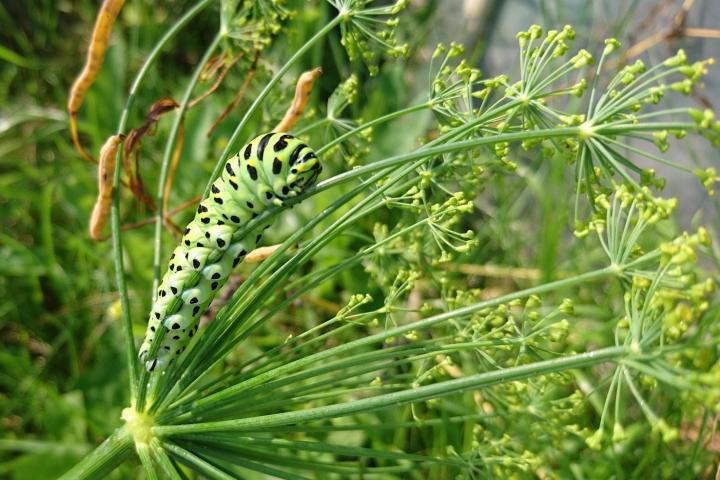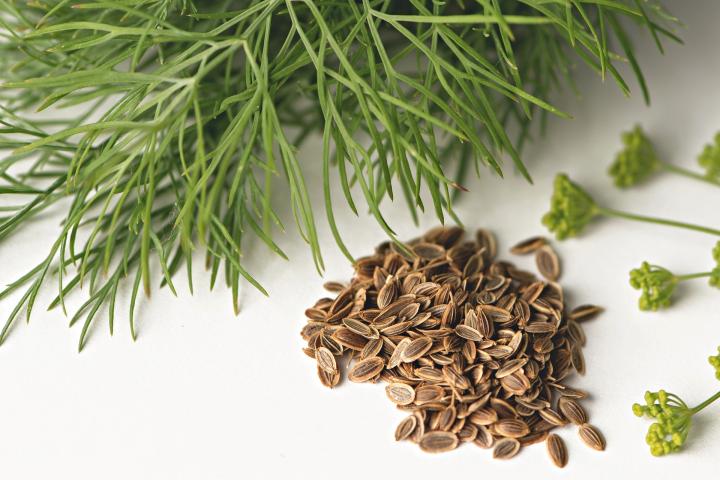Dill is an annual, self-seeding plant with feathery green leaves. It is used most commonly in soups and stews or for pickling. Dill weed is easy to grow—here’s how!
If you’re planting dill for pickling, plant every few weeks into midsummer to ensure a constant supply for when the harvest begins!
To create a permanent patch of dill, allow some of the plants to flower and go to seed each year—you’ll have plenty of early dill to start the season.
Dill attracts beneficial insects such as wasps and other predatory insects to your garden, and is a host plant for the caterpillar of the black swallowtail butterfly.
 Black swallowtail caterpillar on dill flowers.
Black swallowtail caterpillar on dill flowers.
PLANTING:


